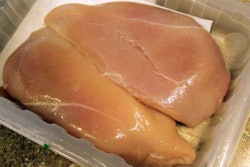
Pet food industry experts recently shared their 2016 predictions for trends to watch with my colleague, Lindsay Beaton, who masterfully compiled and distilled them into an analysis worth a careful read. Several of those prognostications match up with my own; plus, other trends and situations have become firmly planted on my radar screen.
Thus, to add my perspective to the growing crowd of trend-watchers this time of year, here are my top 5 questions for everyone in pet food to ponder for 2016:
- Continued growth of certain pet food categories and market segments, especially “alternative” formats like freeze-dried, baked and “gently processed.” Will these latter categories be able to reach enough of a critical mass of consumer demand and market supply to bring down prices? Will grain-free pet food, now mainstream, continue to grow at its currently torrid pace of 25%?
- What are the next protein sources for pet foods, as they compete with human foods while the global demand for protein continues to rise? Specifically, is 2016 the year when insect-based protein shows up in a complete, non-veterinary pet diet? Currently, you can find insect protein in a few pet treats; the only complete and balanced pet food it’s used in (that I’m aware of) is a therapeutic dog food sold in the Netherlands by TroVet.
- What’s the next big pet food merger or acquisition? This year alone saw several big ones: J.M. Smucker Co. acquiring Big Heart Pet Brands; Nestlé buying Merrick Pet Care; Partner in Pet Foods, the large European private label manufacturer, being acquired by another private equity (PE) firm (Pamplona Capital Management); V.I.P. Petfoods, the largest pet food company in Australia, also being bought by a PE firm (Quadrant). Plus, a number of smaller transactions took place. I’ve heard anecdotally from pet food insiders in Europe that M&A talk is on the rise there, so we may hear some announcements early in the new year. And, it’s not out of the question that another big bombshell will drop in North America soon, too.
- How will the industry respond to increasing pet owner awareness, involvement and activism when it comes to their pets’ nutrition? Not only are consumers continuing to demand more information and transparency about what’s in their pets’ food, as well as how and where it’s made, they are also starting to pay attention to who’s making it and how those people are treated. The fact that some fishing companies in Southeast Asia use slave labor—and some of that fish goes into pet food—made a big splash in the mainstream media this year, even prompting lawsuits against major pet food players, like Nestlé Purina PetCare and Mars Petcare. As I pointed out at the time, most pet owners are not litigious, or willing to pay more for pet foods or brands that actively address social and environmental concerns—but those concerns are increasingly making it to pet parents’ list of considerations in choosing pet food brands. For those who are willing to pay more, they are starting to find an increasing number of pet treats and foods certified as organic or free of GMO ingredients (a trend highlighted by several experts in Beaton’s article), which in effect addresses some of those other concerns.
- How will pet food manufacturers react to new US regulations being implemented in 2016? Those include the animal feed preventive control and foreign supplier verification program rules under the Food Safety Modernization Act (FSMA), as well as the new Association of American Feed Control Officials requirements for calorie content statements on nearly all dog and cat food labels. Most larger manufacturers are well on their way to compliance, especially with the FSMA regulations, which have been thoroughly discussed and dissected since the act was signed into law nearly five years ago. Yet small companies, while they have a longer grace period for implementation, also are more likely to struggle to find the resources and knowledge needed to comply. And in terms of changing pet food labels to include calorie contents, the clock is ticking for everyone.
It’s no accident that the last two situations make my list; in my mind, they’re closely linked. Though some pet food manufacturers view the new regulations as an unnecessary pain and expense, the fact is that complying with them might also help the industry meet that consumer demand for greater transparency.
As a successful 2015 draws to a close, here’s to a prosperous, progressive 2016 for the pet food industry and all its dedicated professionals.



















